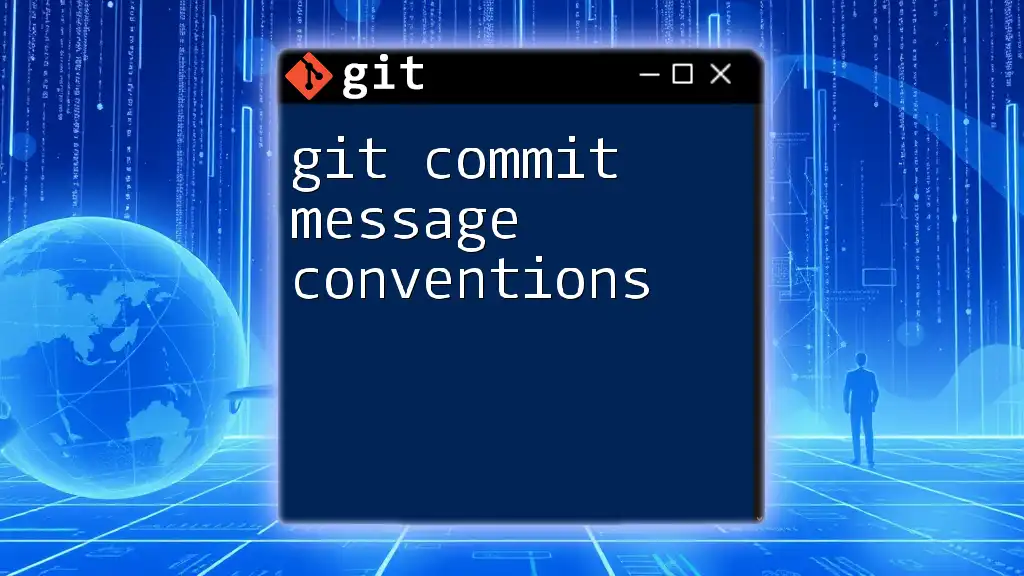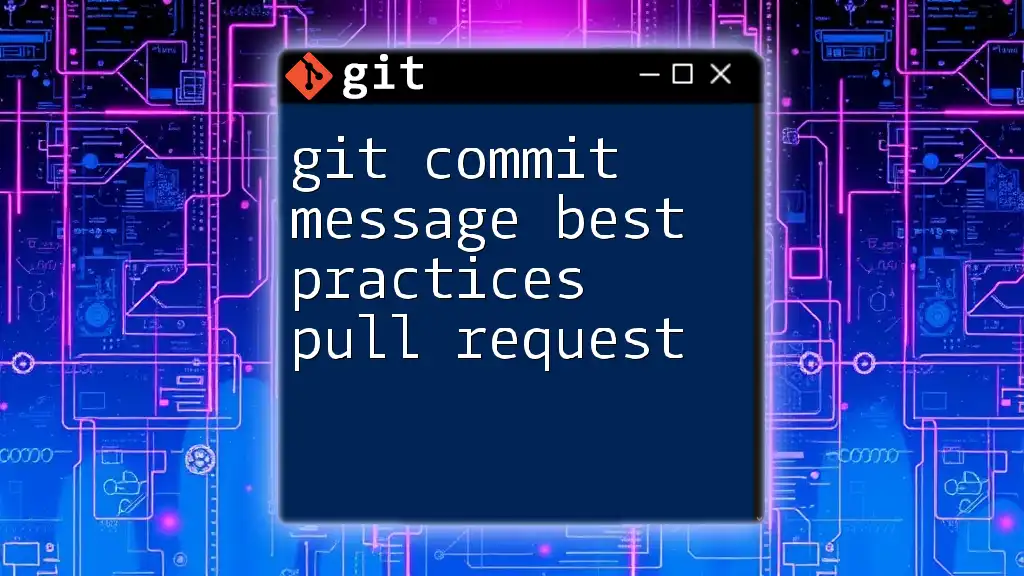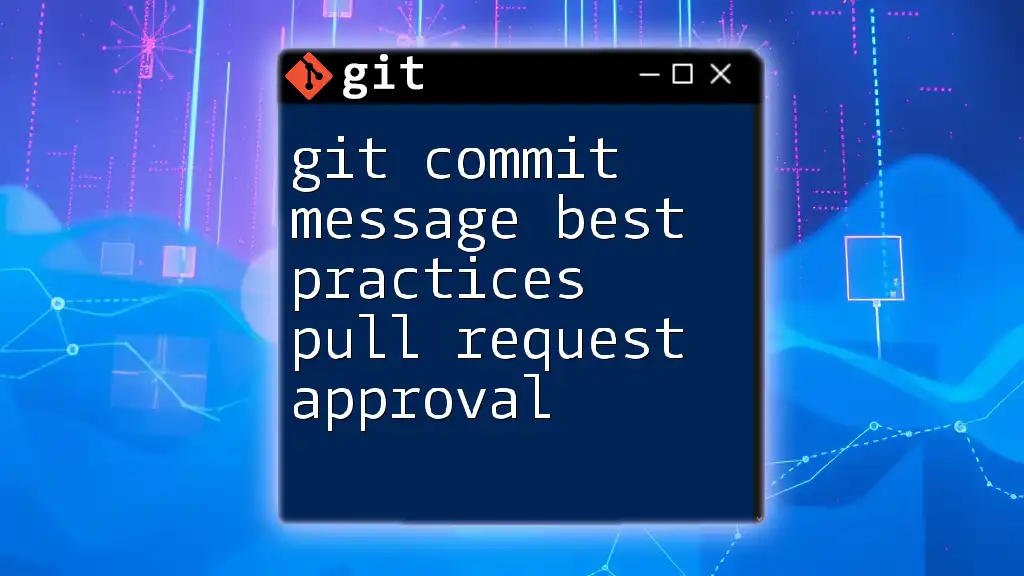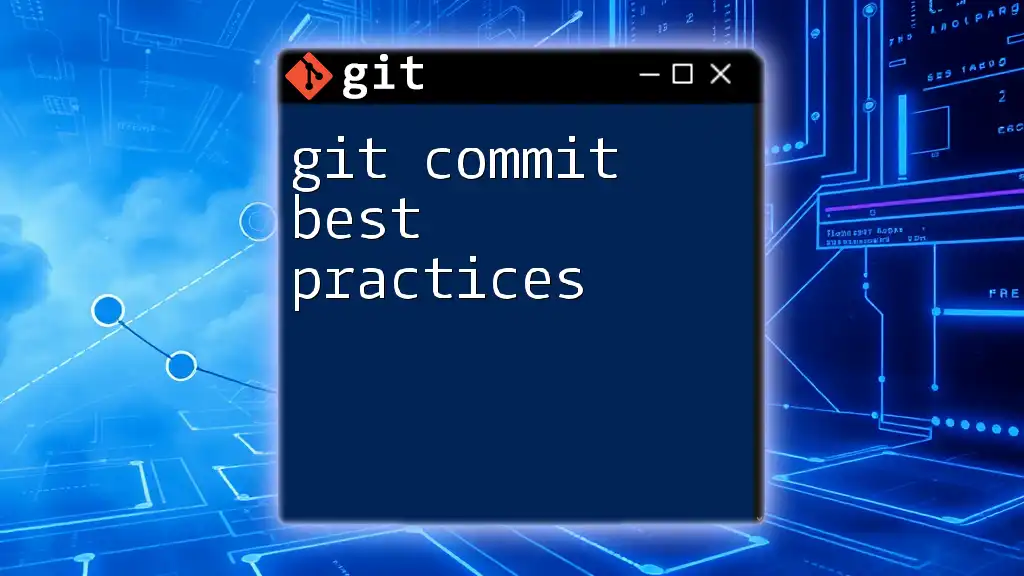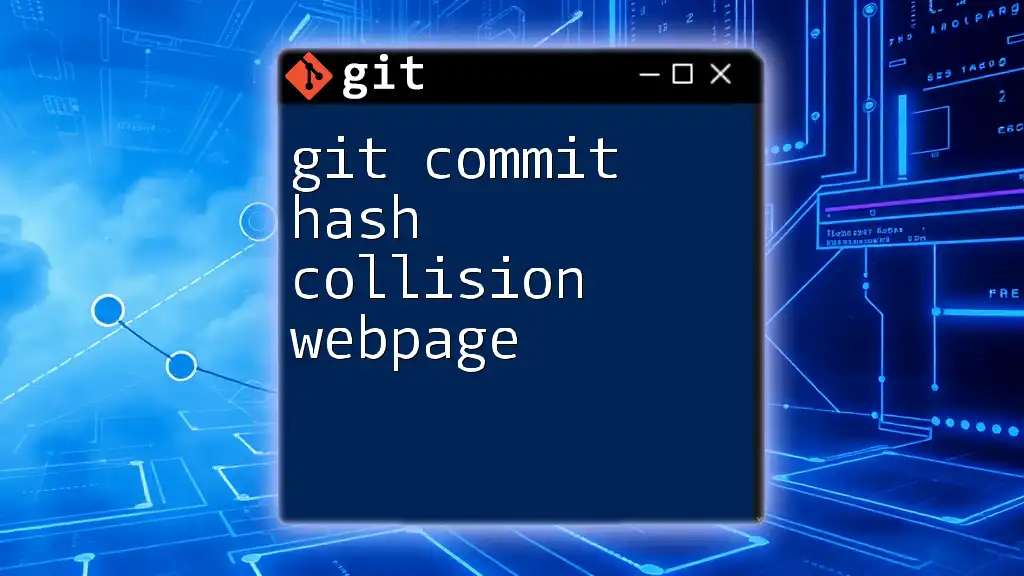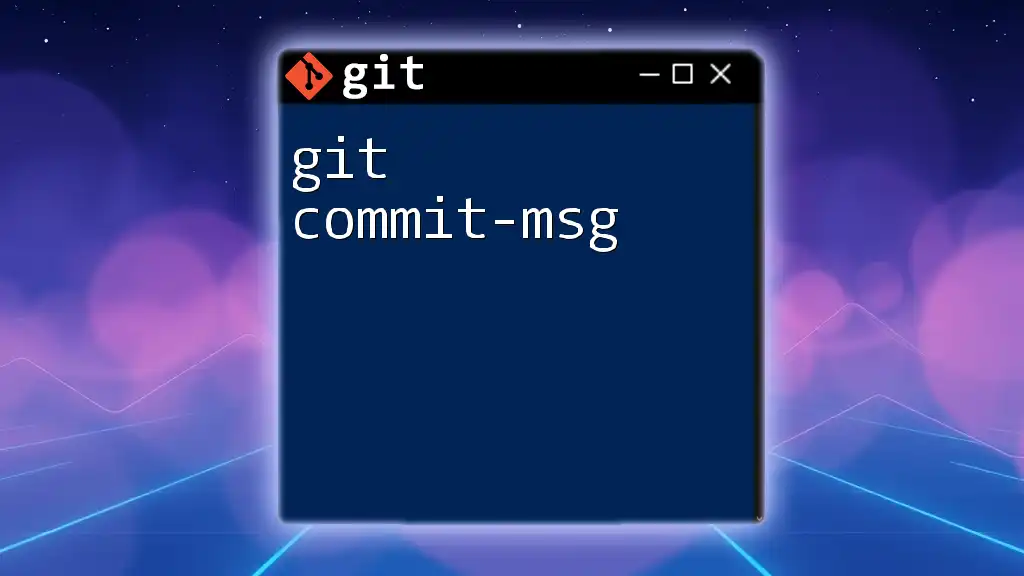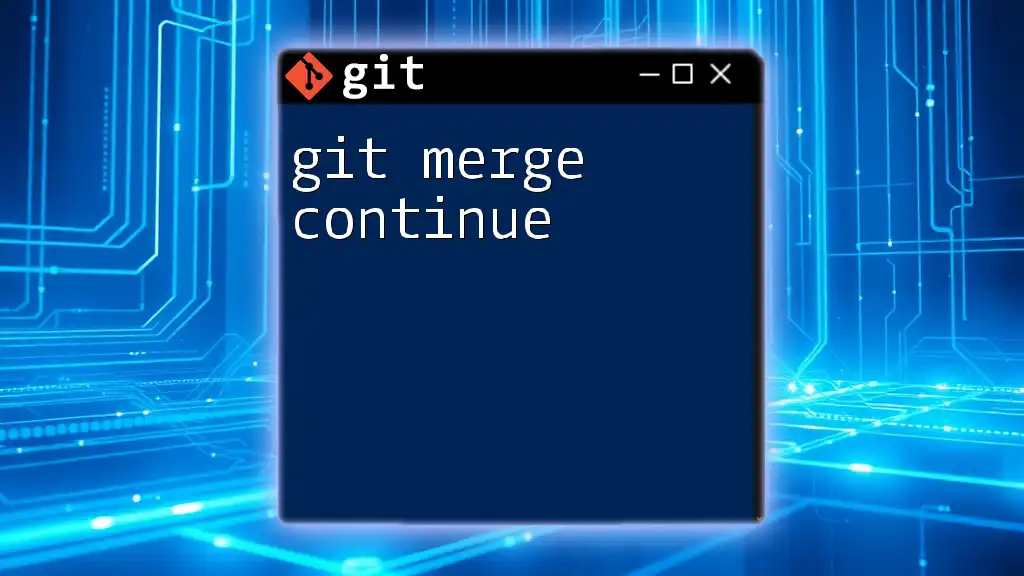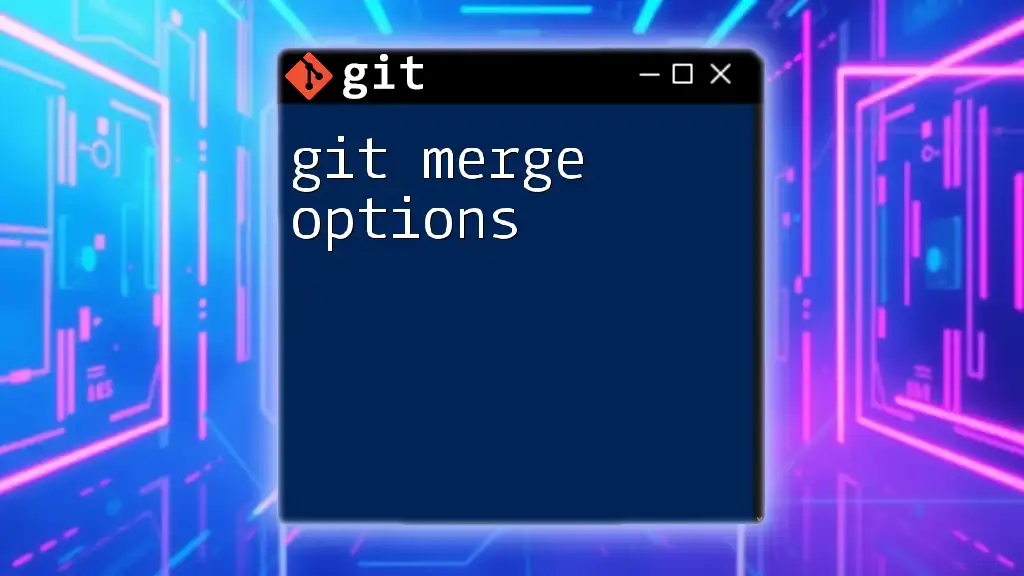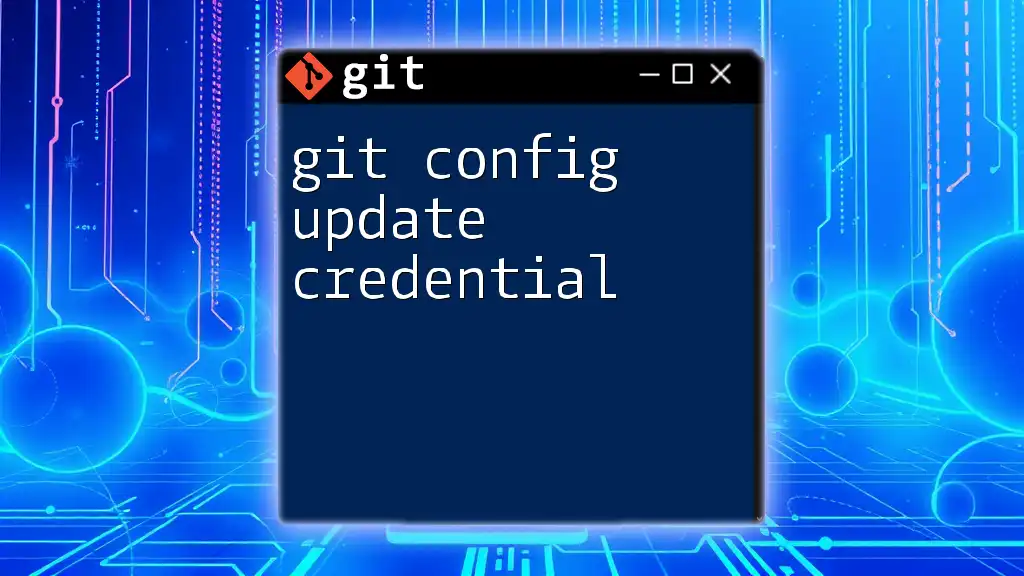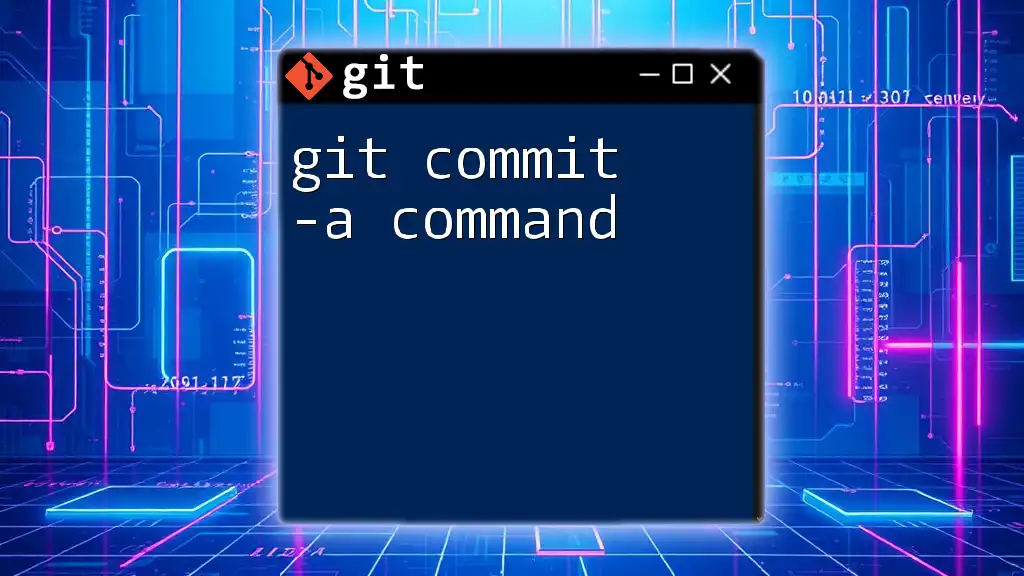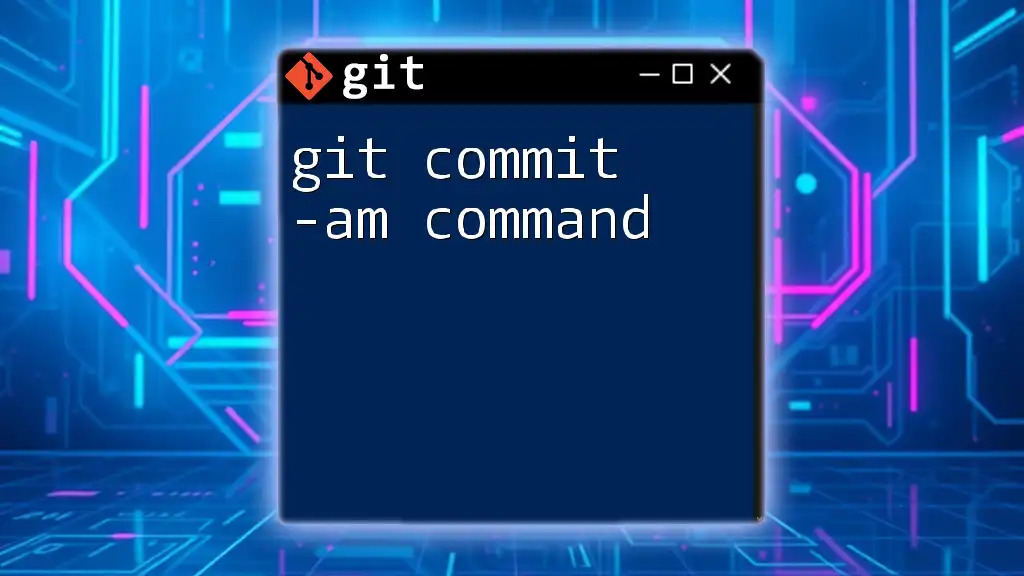Git commit message conventions are guidelines that help developers write clear and consistent commit messages to improve project readability and maintainability. Here's an example of a well-structured commit message:
git commit -m "feat: add user authentication module" -m "This commit introduces a new module for user authentication, improving security and user management."
What are Git Commit Messages?
Git commit messages are a critical part of version control that provide context about changes made to a codebase. Every time developers save progress in their work, they write a commit message to explain the rationale behind the update. These messages not only serve as documentation for future reference but also help teams collaborate effectively by providing a clear history of changes.
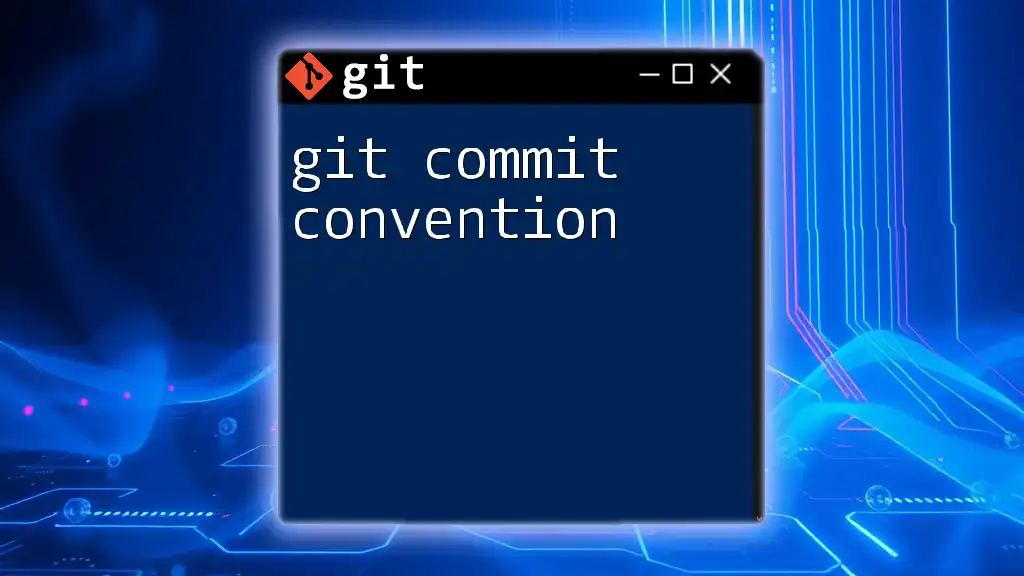
Importance of Consistent Commit Messages
Consistency in commit messages greatly improves collaboration within development teams. When every team member adheres to the same conventions, it becomes easier to review project history, understand the evolution of the code, and pinpoint when specific changes were made. Clear commit messages reduce confusion, facilitate issue tracking, and enhance communication among team members.
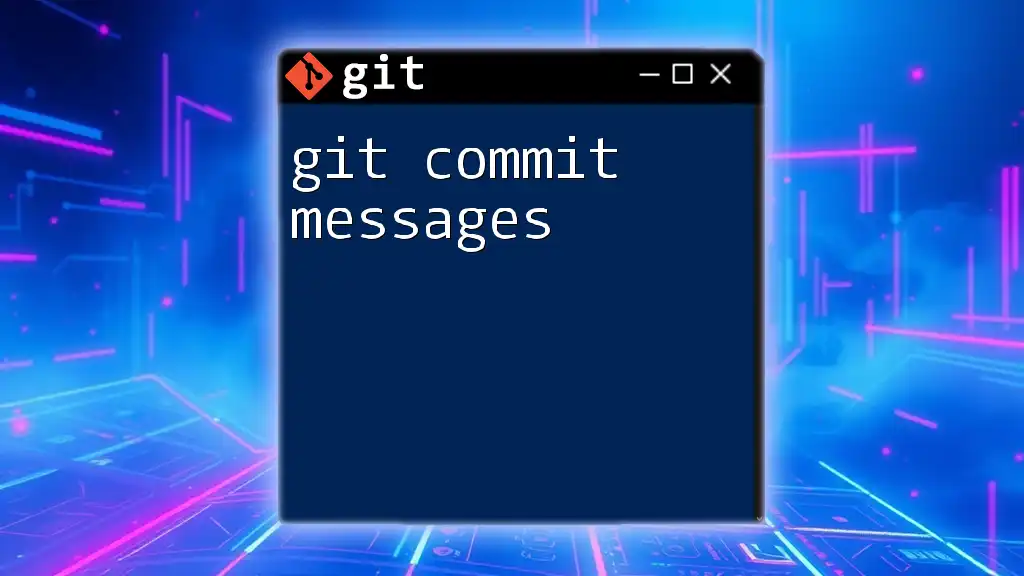
Understanding the Basics of Commit Messages
The Structure of a Commit Message
A well-structured commit message typically encompasses three main components: the header, the body, and the footer.
Header: This is the most critical part of the commit message. It follows a specific format: `<type>(<scope>): <subject>`.
For example:
feat(ui): add button component
Body (optional): This section can be included to provide a deeper context about the commit. It should explain what changes were made, why they were necessary, and any relevant information that might help future reviewers.
An example body might look like this:
Made adjustments to the button component to improve accessibility.
Implemented ARIA attributes for screen readers.
Footer (optional): The footer can include references to any issues that were closed or important information such as breaking changes.
For instance:
Closes #42
Convention Types
Understanding the various types of commits is essential for implementing effective commit message conventions. Below are common types of commits, each denoting a specific purpose:
-
feat: A new feature addition.
- Example: `feat(auth): add login functionality`
-
fix: A bug fix that addresses a known issue.
- Example: `fix(ui): resolve button alignment issue`
-
docs: Changes that occur solely in documentation.
- Example: `docs(readme): update installation instructions`
-
style: Modifications that do not change the underlying code but focus on formatting or organization.
-
refactor: Changes to the code that neither improve performance nor fix bugs but restructure existing code.
-
perf: Code changes that specifically improve the performance.
-
test: Additional tests or corrections of test cases.
-
chore: Changes to the build process or auxiliary tools and libraries that do not affect the application’s functionality.
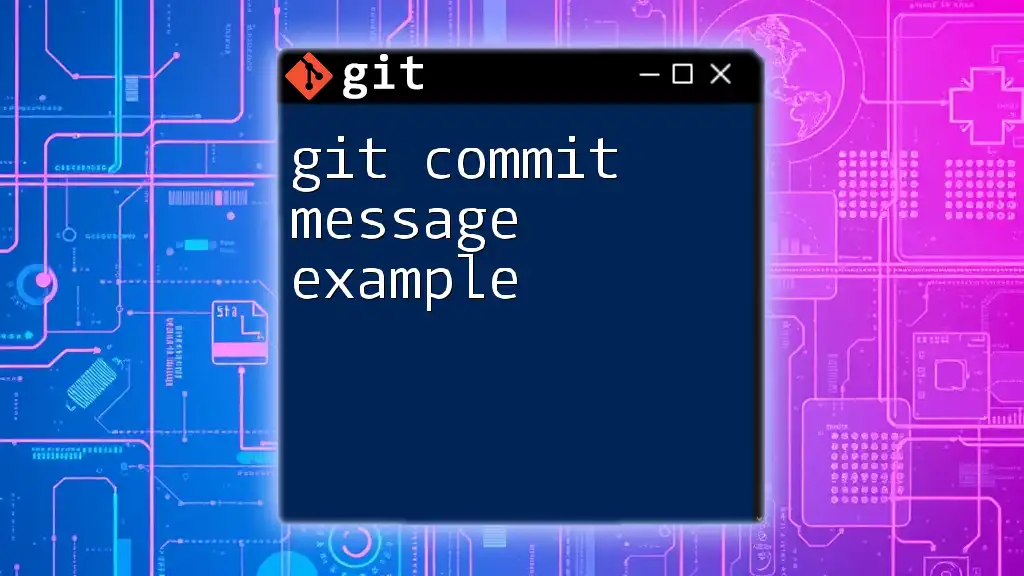
Creating Meaningful Commit Messages
Best Practices for Writing Clear Messages
To write effective commit messages, adherence to best practices is crucial.
Be Descriptive but Concise: Aim to convey the essence of the change without unnecessary verbosity. For instance, instead of a vague message like "fixed stuff," one could write, "fix(ui): resolve button alignment issue." This change provides clarity about both the area affected and the nature of the change.
Use the Imperative Mood: Commit messages should typically be written in the imperative mood. For example, it’s preferable to use “Add” rather than “Added” or “Adding.” This approach makes it clearer what the commit will do.
Limit Line Length: The first line of a commit message should be limited to 72 characters to ensure readability in most interfaces. Keeping messages short and to the point allows other developers to quickly comprehend the purpose of the commit.
Examples of Good vs. Bad Commit Messages
- Good Commit Messages:
- `fix(api): correct endpoint for user profile`
- `feat(tests): add unit tests for form validation`
- Bad Commit Messages:
- `fix stuff`
- `changes made`
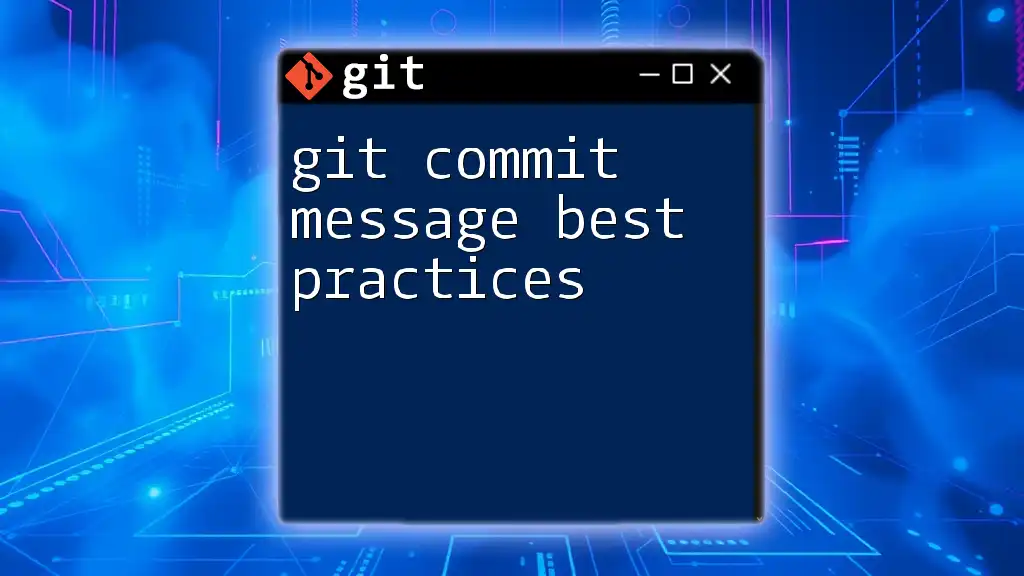
Common Commit Message Conventions
Conventional Commits
Conventional Commits is a specification that adds meaning to commit messages, making them easier to understand both for humans and machines. This system defines a standard for writing commit messages that can be parsed by tooling for release automation.
How to Implement Conventional Commits in Your Project: You can integrate conventional commits by encouraging team members to follow the established format and styles. For automated processes, consider using tools like `commitlint` combined with your Git hooks.
Other Popular Conventions
Gitmoji: Gitmoji offers a fun way to add visual context to your commit messages by using emojis. For example, instead of writing out a message, one might use:
🎉 feat: initial commit
This visual cue allows for rapid recognition among team members.
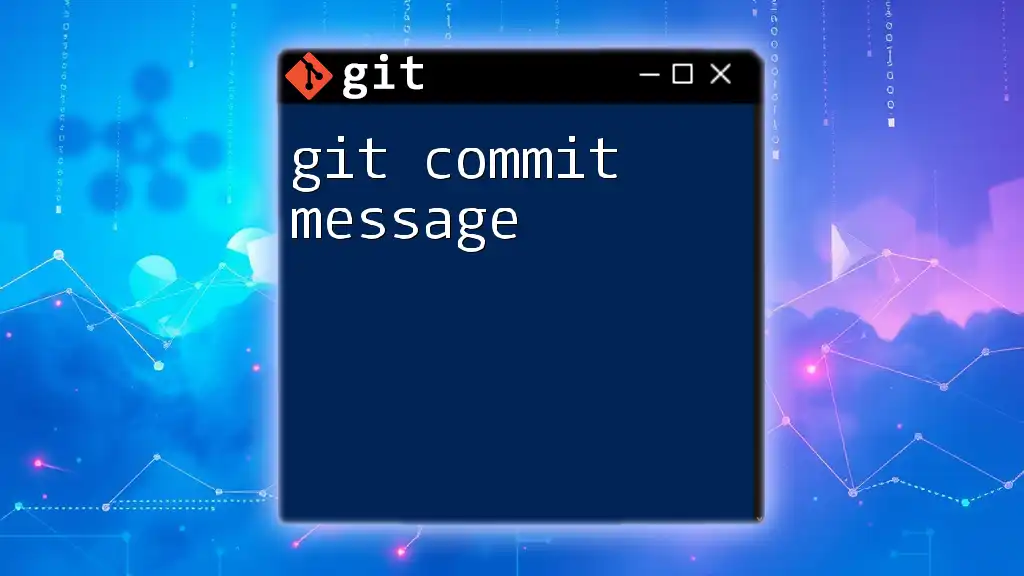
Tools and Automation
Using Commitizen
Introduction to Commitizen: Commitizen is a tool that helps streamline the process of writing commit messages in compliance with conventions. Using command-line prompts, it guides users through the message creation process, ensuring consistency throughout the project.
Linting Commit Messages
Implementing CommitLint: CommitLint is a tool that checks the commit messages against a defined style guide. To set it up, you will need to install it in your project and create a configuration file (`.commitlintrc.json`) where you define your conventions. An example might look like:
{
"extends": ["@commitlint/config-conventional"]
}
With this configuration, you can lint commit messages automatically during the commit process, ensuring adherence to the defined conventions.
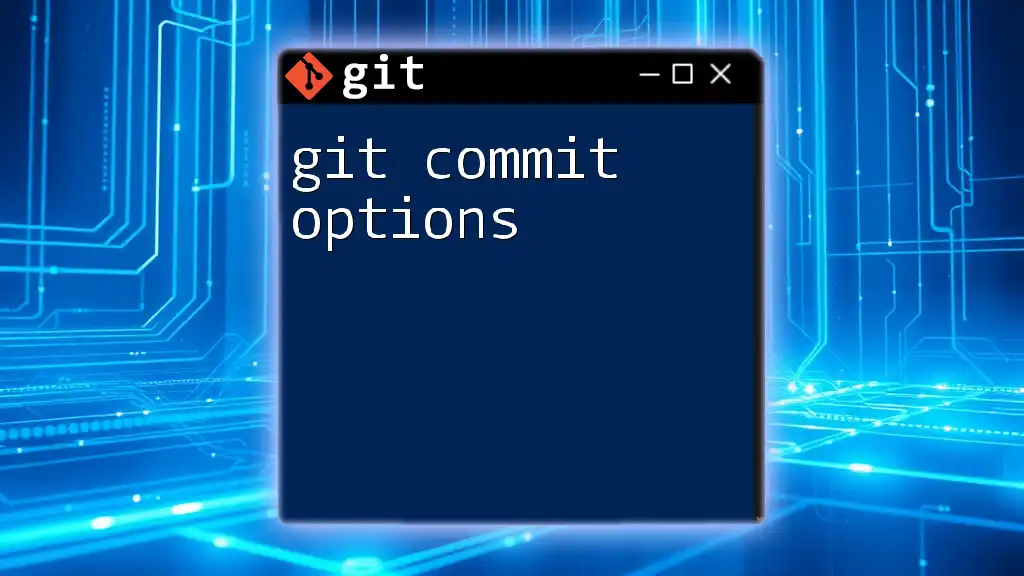
Conclusion
Establishing git commit message conventions within a development team is vital for maintaining a clean and understandable project history. By adhering to a well-defined structure, employing best practices, and leveraging tools for assistance, developers can significantly improve collaboration and communication.
Encouragement to Adopt Best Practices: Embrace these guidelines in your projects to foster stronger collaboration, clearer communication, and ultimately a more structured development process. Implementing effective commit message conventions can transform how your team works together, making future reference effortless and efficient.
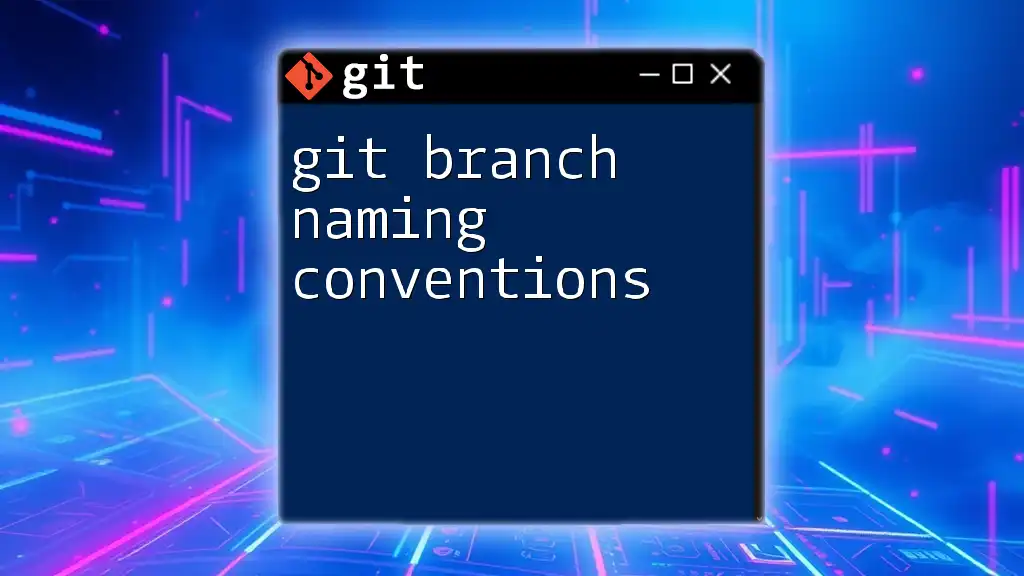
Additional Resources
For further information and resources on git commit message conventions, consider exploring the official Git documentation and researching best practices in version control management. Additionally, you may discover useful commit message templates and other best practices that can be utilized within your workflows.
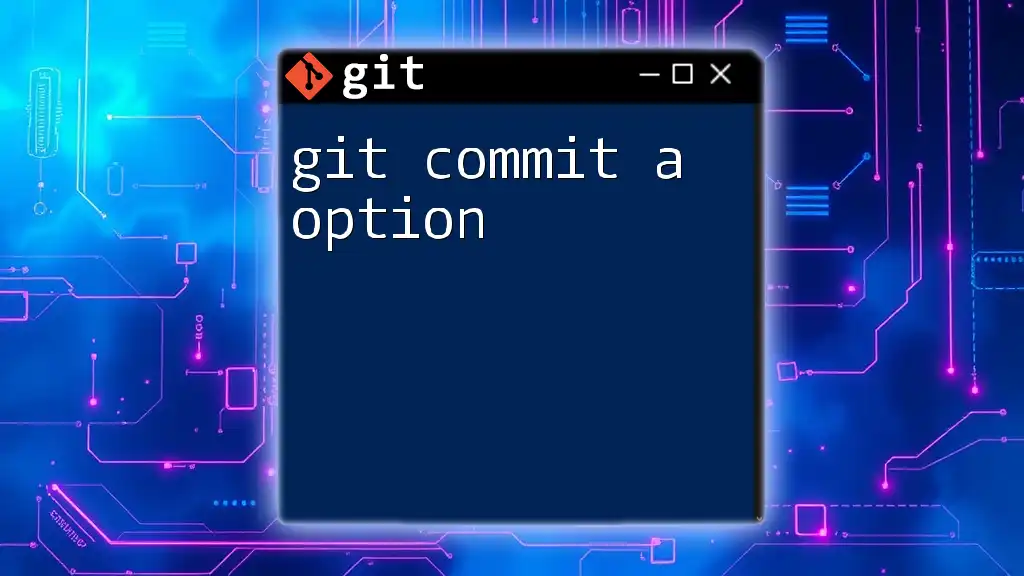
Call to Action
Continue your journey in mastering Git. Subscribe to our content for more in-depth guides and tips on using Git commands effectively. Build better workflows and collaborate like a pro!

